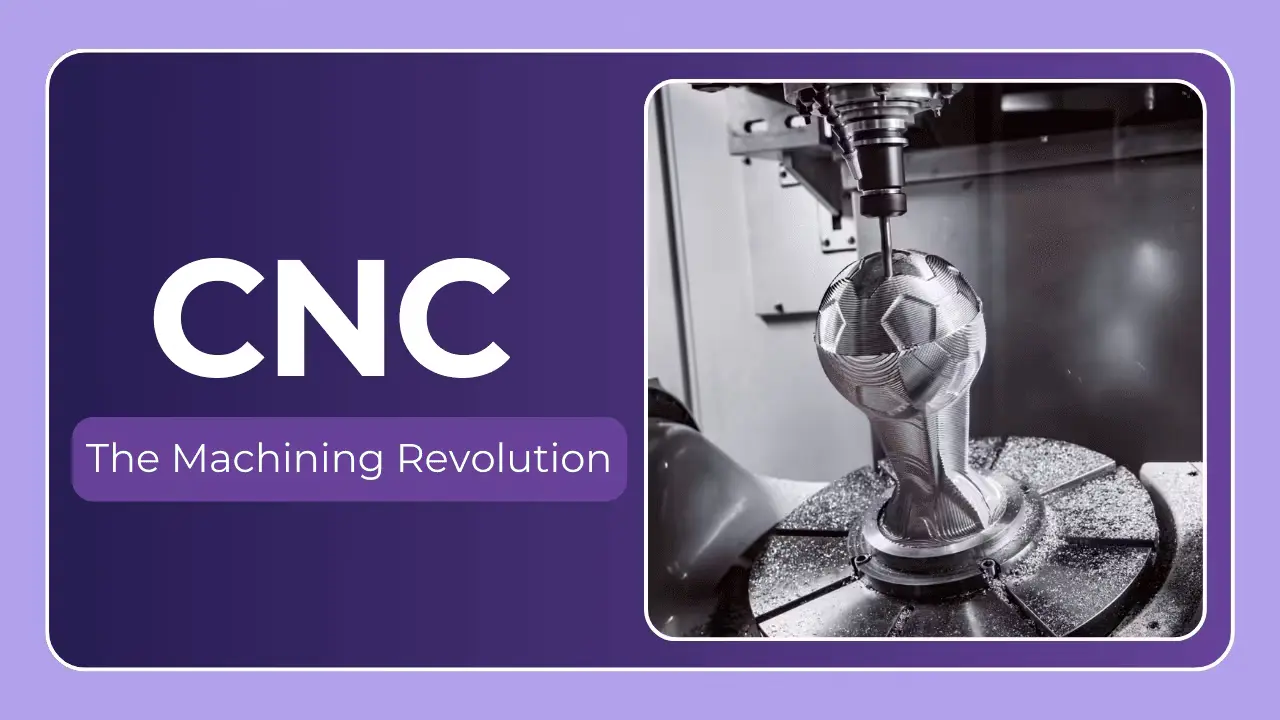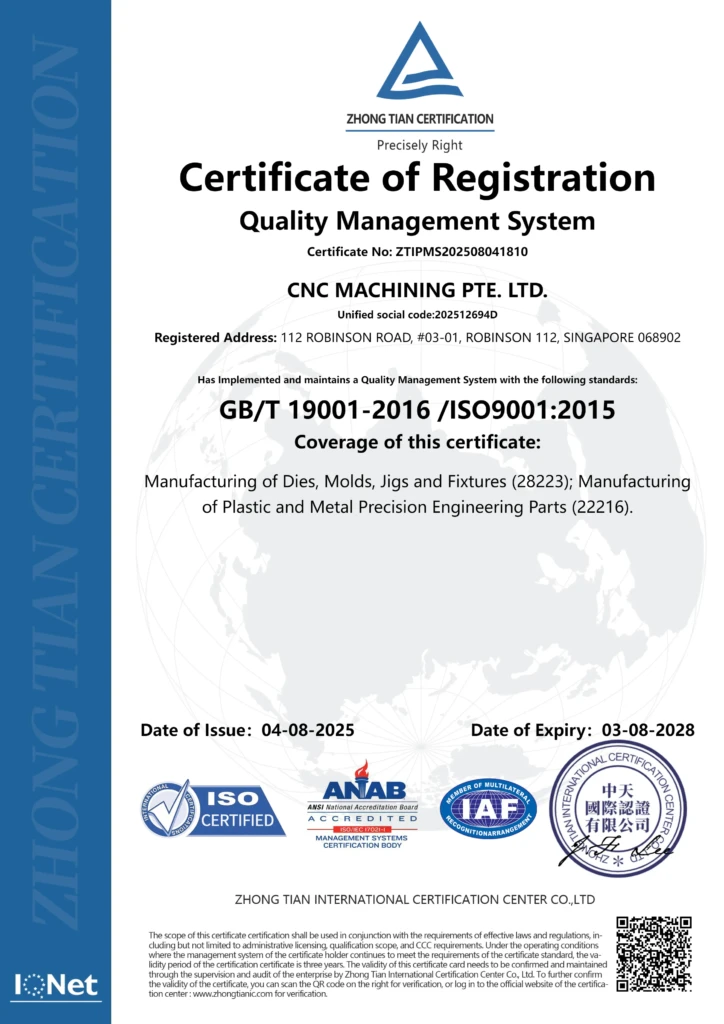A Quick Guide to CNC Machines: From Basics to Advanced Capabilities
In today’s manufacturing landscape, Computer Numerical Control (CNC) machines are ubiquitous. They’re the workhorses behind everything from intricate aerospace components to everyday consumer products. But what are CNC machines, and what makes them so vital? This guide will break down the fundamentals, explore different types, discuss the benefits, and even touch on the future of this transformative technology. We’ll also highlight how a specialist like CNC MACHINING PTE. LTD in Singapore can leverage these machines to deliver exceptional precision and customized solutions.
What is CNC Machining?
At its core, CNC machining is a subtractive manufacturing process. This means material is removed from a solid block (the workpiece) to create the desired shape. Unlike traditional machining which relies on manual operation, CNC machining utilizes pre-programmed computer instructions to control the movement of tools. Think of it like a robotic craftsman, following a detailed blueprint with incredible accuracy and repeatability.
The “CNC” part stands for Computer Numerical Control. This control is achieved through G-code, a programming language that dictates the machine’s actions – where to move, how fast to cut, when to change tools, and more. A skilled CNC programmer translates a design (often created in CAD – Computer-Aided Design – software) into this G-code.
The Core Components of a CNC Machine
Understanding the key components helps appreciate how these machines function:
- Machine Bed: The foundation of the machine, providing stability and support.
- Spindle: The rotating part that holds the cutting tool. Spindle speed (RPM) is a critical parameter.
- Cutting Tool: A variety of tools are used, including mills, drills, lathes, and more, each designed for specific operations. Tool material (carbide, high-speed steel, etc.) impacts performance and lifespan.
- Control System: The “brain” of the machine, interpreting the G-code and controlling the movements.
- Drive System: Motors and mechanisms that translate the control system’s instructions into physical motion. Linear motors, servo motors, and stepper motors are common.
- Automatic Tool Changer (ATC): Allows the machine to automatically switch between different tools during a single operation, increasing efficiency.
Types of CNC Machines: A Diverse Toolkit
CNC machines aren’t one-size-fits-all. Different types cater to specific needs and applications:
| Machine Type | Description | Common Applications | Typical Materials |
|---|---|---|---|
| CNC Milling Machines | Use rotating cutters to remove material. Can perform a wide range of operations like drilling, profiling, and pocketing. | Mold making, prototyping, complex parts with intricate geometries. | Aluminum, steel, plastics, titanium. |
| CNC Lathes | Rotate the workpiece while a cutting tool is used to shape it. Ideal for creating cylindrical parts. | Shafts, screws, bushings, and other rotational components. | Steel, brass, copper, plastics. |
| CNC Routers | Similar to milling machines, but typically used for softer materials like wood, plastic, and foam. | Signage, furniture, prototyping, and composite materials. | Wood, acrylic, foam, aluminum (softer grades). |
| CNC Plasma Cutters | Use a plasma torch to cut through electrically conductive materials. | Sheet metal fabrication, automotive parts, and artistic designs. | Steel, stainless steel, aluminum, copper. |
| CNC Electrical Discharge Machining (EDM) | Uses electrical sparks to erode material. Excellent for creating complex shapes and hard materials. | Dies, molds, and intricate features in hardened steel. | Hardened steel, titanium, carbide. |
| CNC Five-Axis Machining Centers | Can move the cutting tool and workpiece along five different axes simultaneously, enabling the creation of highly complex geometries. | Aerospace components, medical implants, and molds requiring complex contours. | Wide range of metals, including titanium, Inconel, and aluminum alloys. |
Benefits of CNC Machining
Why has CNC machining become so dominant? The advantages are compelling:
- Precision & Accuracy: CNC machines deliver incredibly tight tolerances, ensuring parts meet exact specifications.
- Repeatability: Once programmed, a CNC machine can consistently produce identical parts, minimizing variations.
- Efficiency & Speed: Automated operation and optimized toolpaths significantly reduce production time.
- Complexity: CNC machining can create intricate designs that would be difficult or impossible to achieve manually.
- Reduced Labor Costs: Automation reduces the need for skilled manual labor.
- Versatility: Capable of working with a wide range of materials.
- Scalability: Easily scale production from prototypes to large-volume runs.
Materials Commonly Used in CNC Machining
The versatility of CNC machining extends to the materials it can handle. Here’s a breakdown:
- Metals: Aluminum (6061, 7075), Steel (Stainless Steel 304, 316, Tool Steel), Titanium (Grade 5), Brass, Copper, Inconel.
- Plastics: Acrylic (PMMA), Delrin (POM), Nylon, Polycarbonate, ABS.
- Composites: Carbon Fiber, Fiberglass.
- Wood: Hardwoods, Softwoods, Plywood.
The Role of Specialized Manufacturers: CNC MACHINING PTE. LTD
While many companies utilize CNC machines, achieving optimal results often requires expertise. This is where specialized manufacturers like CNC MACHINING PTE. LTD in Singapore excel. They offer:
- Advanced Equipment: Investing in state-of-the-art five-axis CNC machining centers.
- Material Expertise: Deep understanding of material properties and machinability.
- Programming Proficiency: Highly skilled CNC programmers capable of optimizing toolpaths for efficiency and accuracy.
- Post-Processing Services: Offering a complete solution, including deburring, polishing, anodizing, and other finishing treatments.
- Rapid Prototyping & Production: Quick turnaround times for both prototypes and large-volume production runs.
- Customization: Ability to handle unique and complex projects tailored to specific client needs.
The Future of CNC Machining
CNC machining is constantly evolving. Key trends shaping its future include:
- Additive Manufacturing Integration (Hybrid Machining): Combining CNC machining with 3D printing to leverage the strengths of both technologies.
- Artificial Intelligence (AI) & Machine Learning: Using AI to optimize toolpaths, predict tool wear, and improve overall efficiency.
- Digital Twins: Creating virtual replicas of CNC machines to simulate and optimize processes.
- Increased Automation: Robotics and automated material handling systems will further streamline production.
- Advanced Materials: Machining increasingly challenging materials like advanced alloys and composites.
- Cloud-Based CNC: Remote monitoring and control of CNC machines via the cloud.
Conclusion
CNC machining is a cornerstone of modern manufacturing, offering unparalleled precision, efficiency, and versatility. From simple components to complex aerospace parts, its applications are vast and continue to expand. Understanding the fundamentals of CNC machining, the different types of machines available, and the benefits they offer is crucial for anyone involved in product development or manufacturing.
For businesses seeking high-quality, customized precision machining solutions, partnering with a specialist like CNC MACHINING PTE. LTD in Singapore can provide a significant competitive advantage. Their advanced capabilities, material expertise, and commitment to quality ensure that even the most demanding projects are completed to the highest standards. Don’t hesitate to explore the possibilities – customize your precision parts today at the best price!




